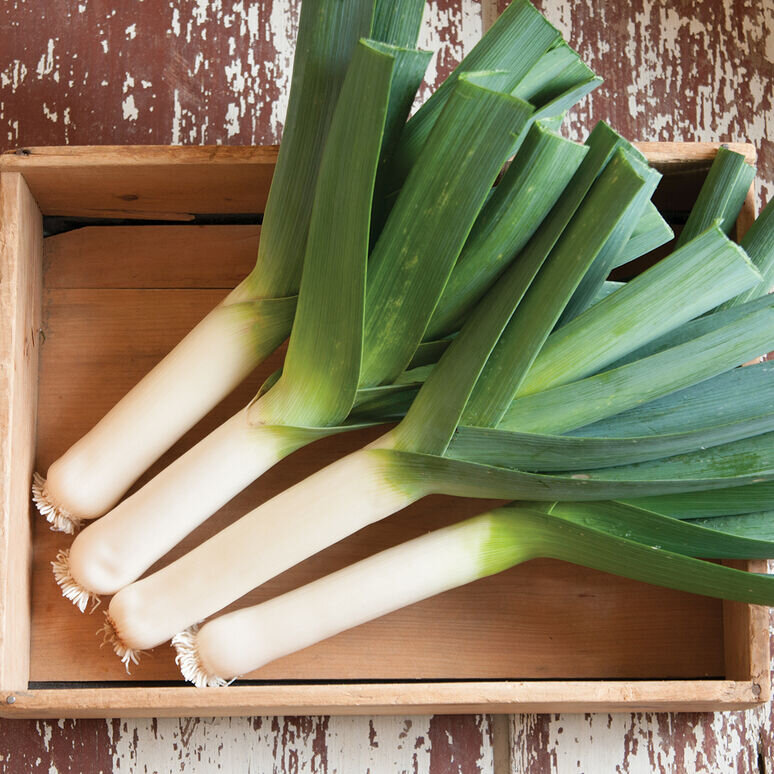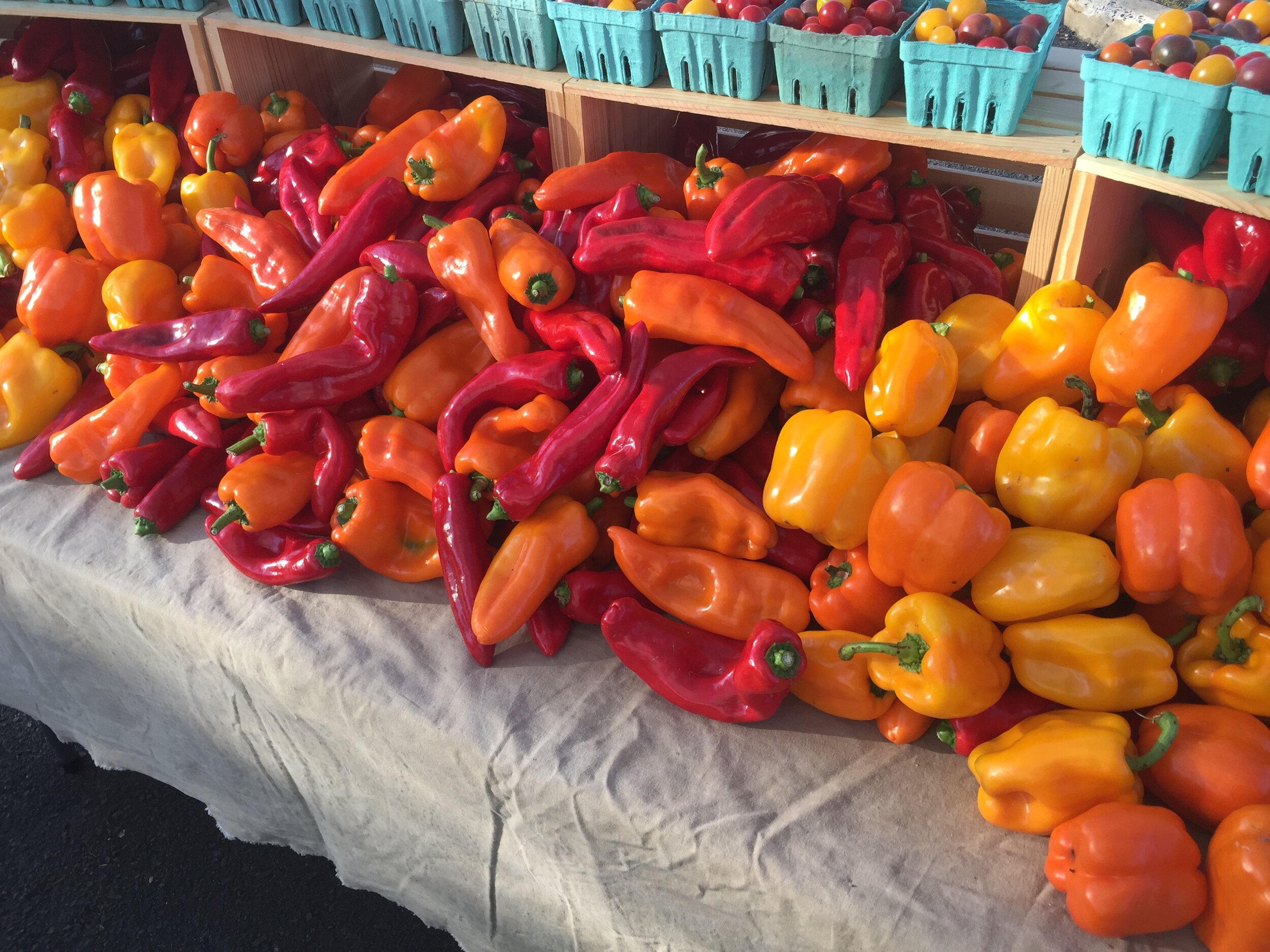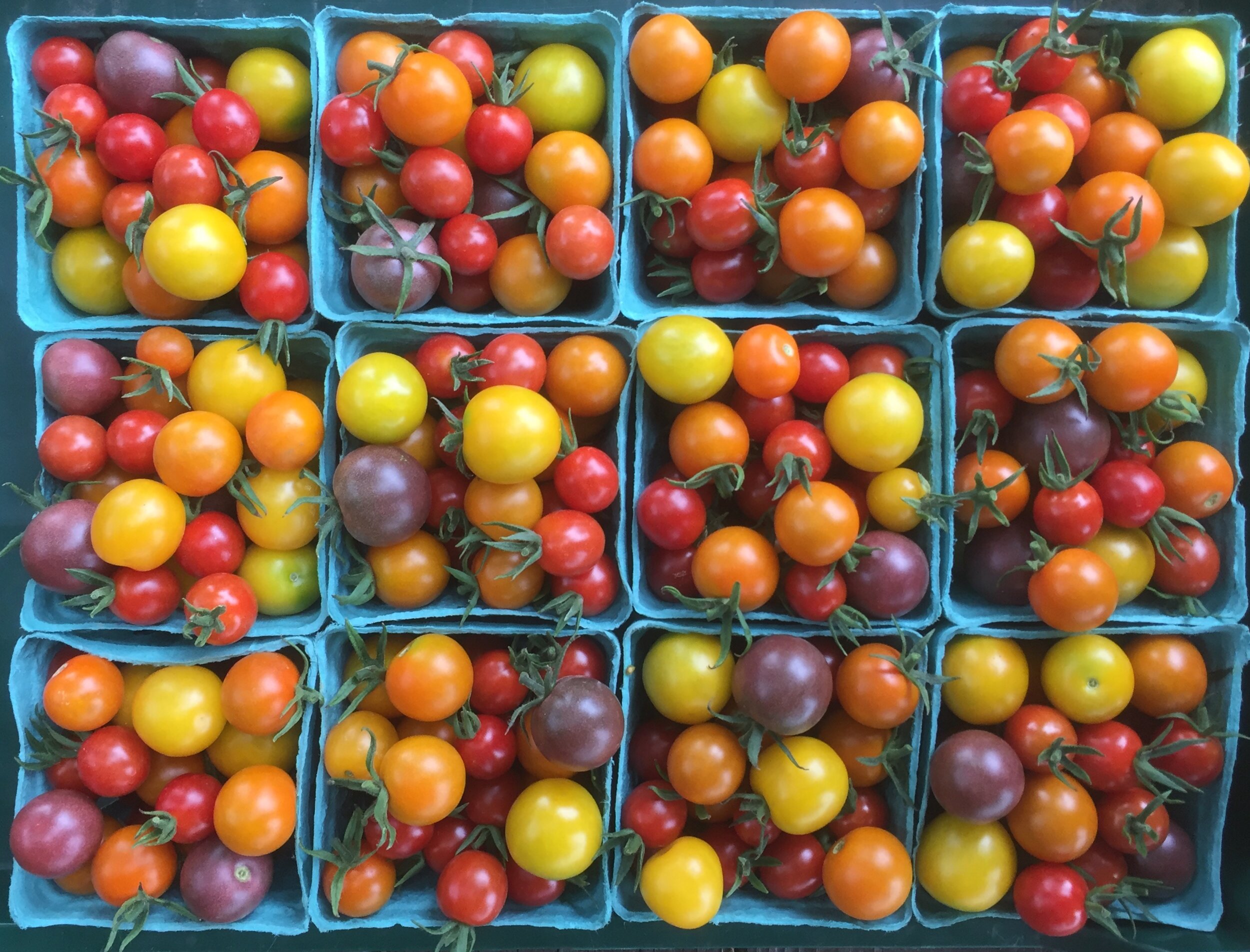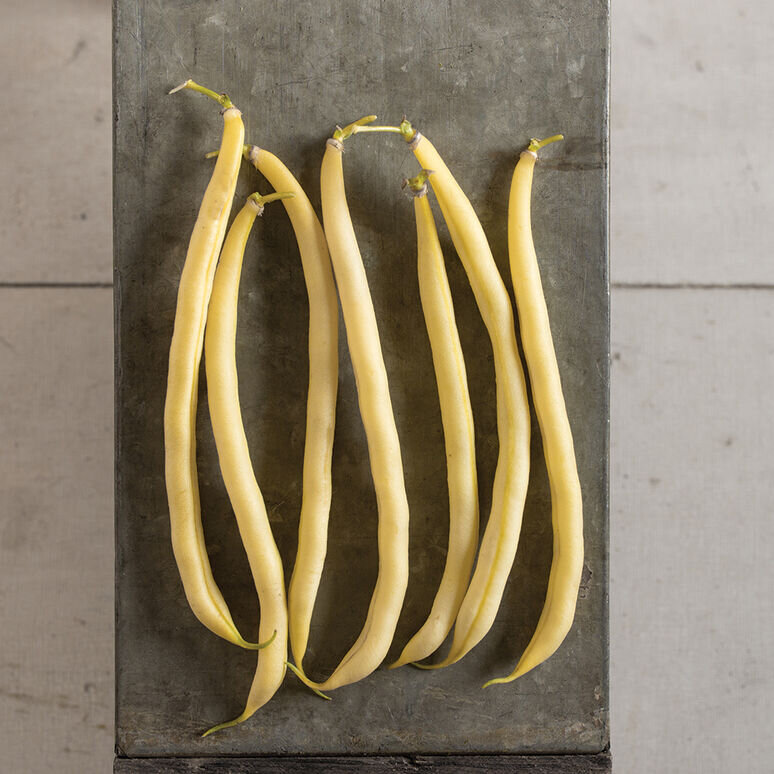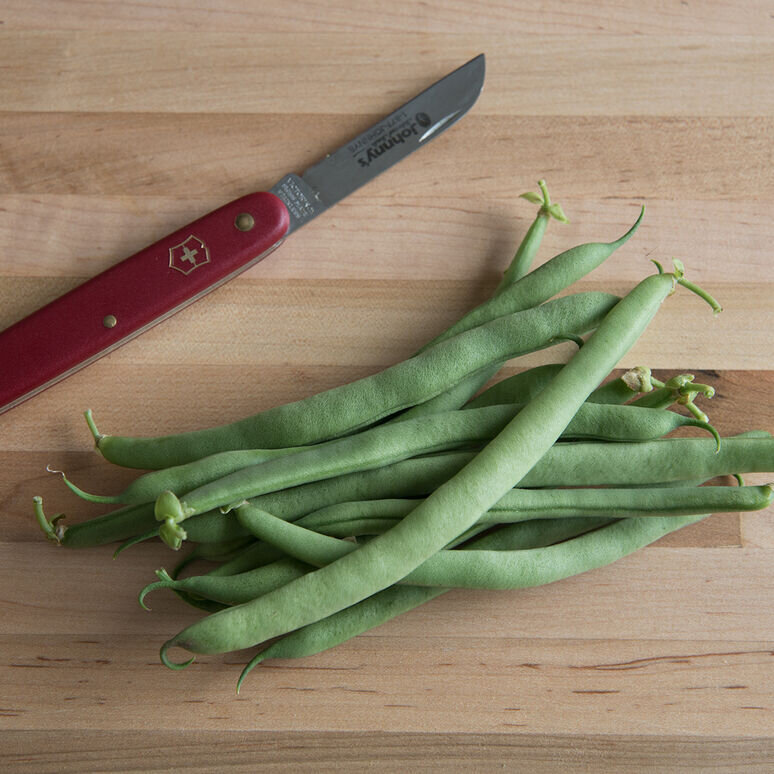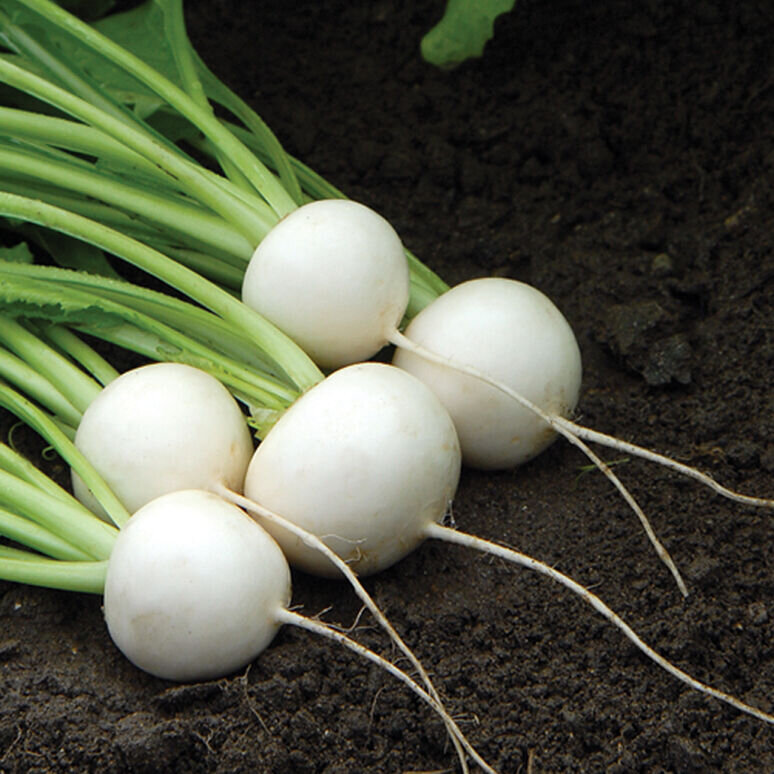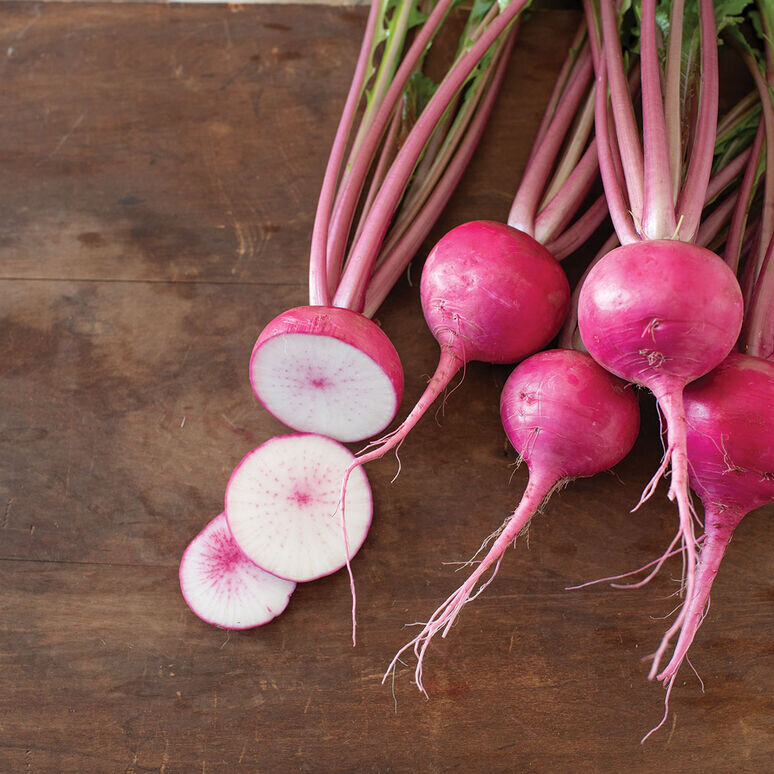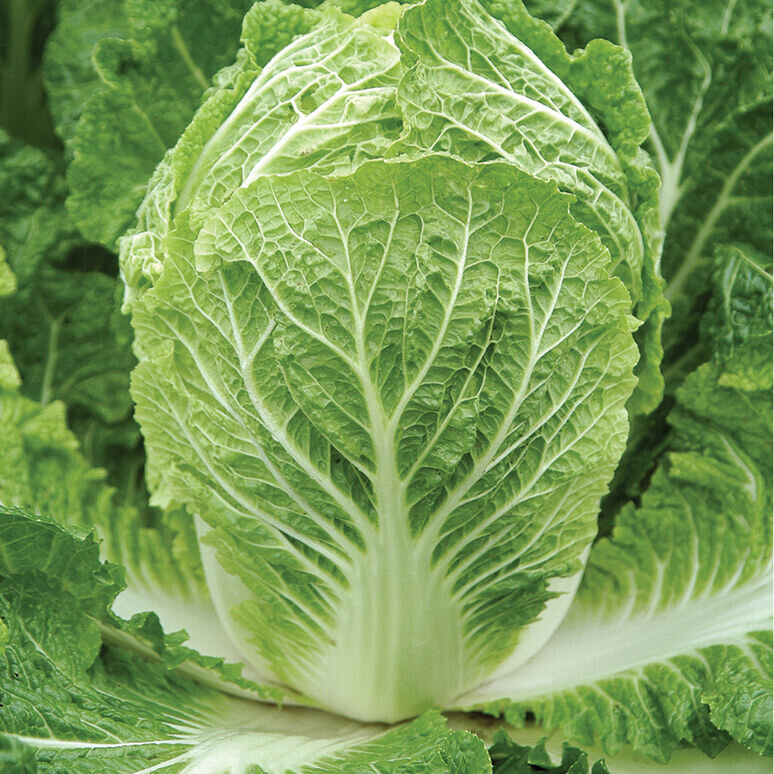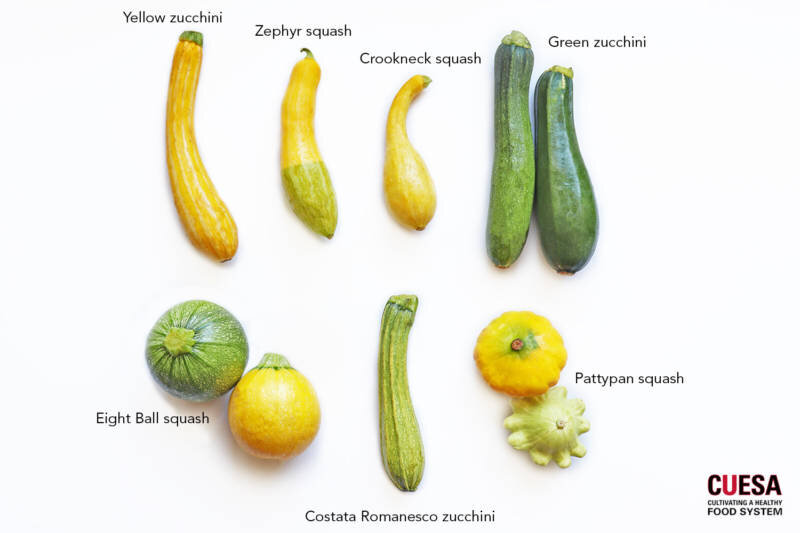Leeks are part of the Allium family and are related to onions and garlic, and have a mild, sweet onion flavor.
The ancient Greeks and Romans believed that eating leeks could soothe the throat and improve the voice. They were also popular in Ancient Egypt.
To prepare, cut off the darker green tops of the leek and peel away any tough leaves. Cut the bulb and leaf portion in half, fan the pieces out in a sieve and wash thoroughly. Leeks can get gritty!
Leeks can be stored long term by chopping, blanching and freezing for soups and stocks or stored in a refrigerator in a bag.
RECIPES
Potato Leek Soup
3 leeks (about 3 cups chopped)
2 tbsp butter
4 cups chicken or vegetable broth
2 pounds potatoes (yukon or russet), peeled, diced unto ½ in pieces
1 tsp sea salt, less or more to taste
pinch of dried marjoram
1 or 2 springs fresh thyme or ½ teaspoon dried thyme
1 bay leaf
¼ cup chopped fresh parsley
sprinkle of tabasco sauce or other red chilli sauce
white or black pepper to taste
Melt butter on medium heat in a 3 to 4 quart thick-bottomed pot. Add chopped leeks, stir to coat with the butter. Cover the pot and reduce the heat to low, cook for 10 minutes until leeks are softened. Check to make sure the leeks are not browning. Add the broth, diced potatoes, bay leaf, marjoram, thyme, and a teaspoon of salt to the pot. Increase the heat to high to bring to simmer, then lower the heat to maintain a low simmer, and cook for 20 minutes, until the potatoes are cooked through. Remove and discard bay leaf and thyme springs. Use an immersion blender of standing blender to blend soup to desired smoothness. Add the parsley, and cook a few minutes more. Add tabasco sauce, pepper, and salt to taste. (https://www.simplyrecipes.com/recipes/potato_leek_soup/)
Chickpea Pancakes with Leeks, Squash, and Yogurt
Rainbow Chard & Leek Quiche with Chard Slaw

